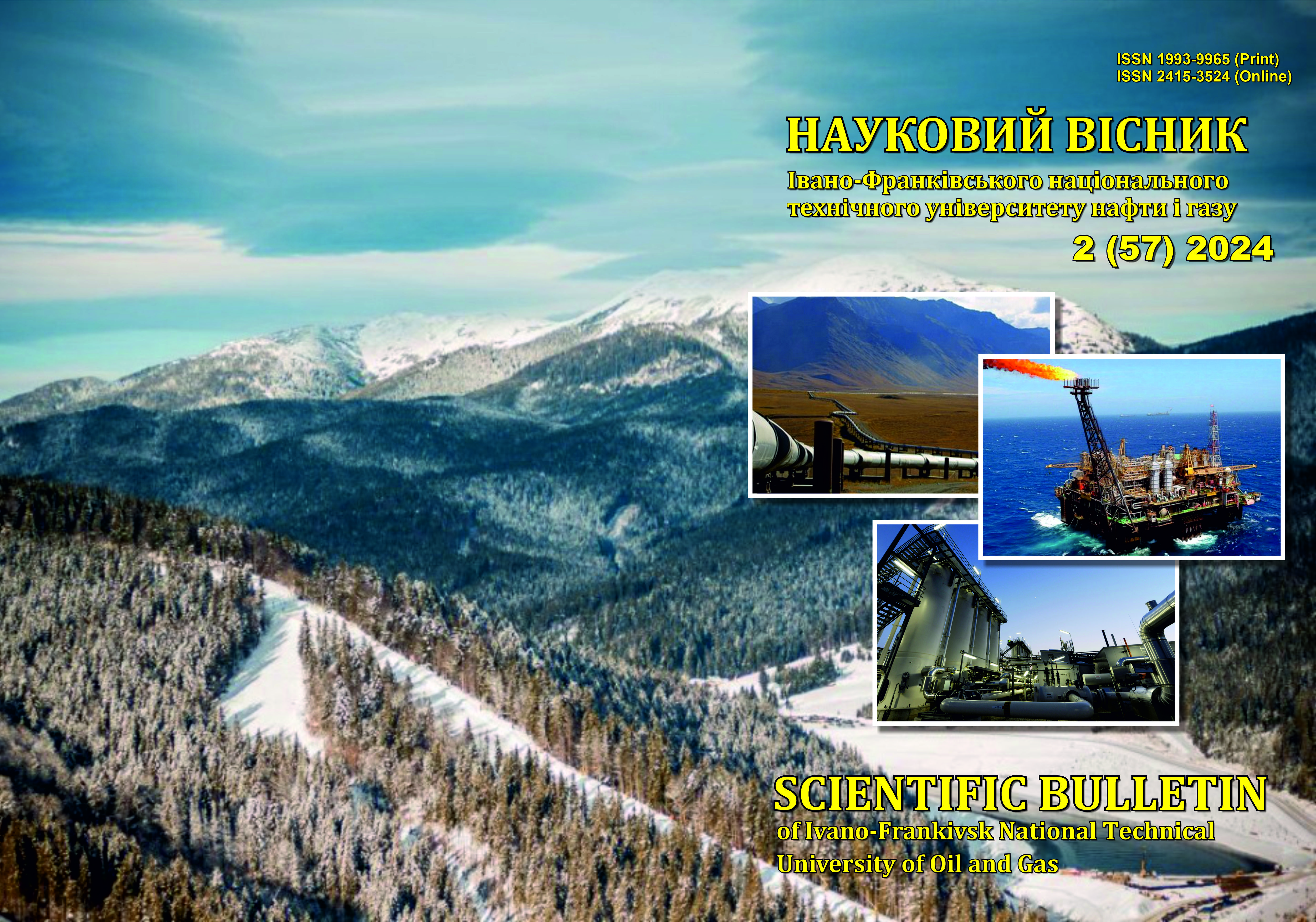WHEELED ROBOTIC PLATFORM FOR MARS EXPLORATION
DOI:
https://doi.org/10.31471/1993-9965-2024-2(57)-34-41Keywords:
shock absorber, hinge, rover, robot manipulator, duralumin, spacecraftAbstract
In the present and near future, the use of mobile wheeled systems (rovers) to explore the surface of Mars is a matter of considerable relevance. Extensive experience in designing such exploratory automobile platforms has already been gained from previous explorations of the Moon and Mars landscapes. The designs of well-known rovers are examined for their benefits and drawbacks. The main mechanical components of the rover — its body, suspension, wheels, and manipulator — are the center of attention. Duralumin is proposed for the manufacture of the main parts, which is one of the lightest structural materials that can withstand the cryogenic conditions of Mars. The insufficient strength of duralumin is compensated by the use of shock absorbers and more flexible suspension control using additional engines. The manipulator and suspension provide extended adaptive functionality, including that associated with autonomous repair and reliability redundancy. Independent suspension enables significant vertical travel of the wheels, which together with hybrid electromagnetic shock absorbers-motors and additional degrees of freedom of the suspension will make it easier to overcome complex obstacles, reduce shock and fatigue loads and provide additional functionality of the suspension. At the same time, the housing capacity's dimensions are adequate to hold power cells, research apparatus, spare parts, and components that increase the manipulator and suspension's usefulness. The morphological study demonstrates that some design alternatives can successfully provide redundancy of the chassis reliability while optimizing the rover units' adaptability.
Downloads
References
Every spacecraft on Mars – comparison [Video] URL: https://youtu.be/ER6EO4B7V68si=XqSnZUgTiKxntKQh (accessed 31.01.25).
Ulivi P., Harland D. M. Robotic Exploration of the Solar System Part I: The Golden Age 1957–1982. Chichester : Springer, 2007. 536 p.
Siddiqi, Asif A. Beyond Earth: A Chronicle of Deep Space Exploration, 1958–2016 (PDF). The NASA history series (second ed.). Washington, DC: NASA History Program Office, 2018. URL: https://www.nasa.gov/wp-content/uploads/2018/09/beyond-earth-tagged.pdf?emrc=967232 (accessed 31.01.25).
Lunokhod 1. URL: https://en.wikipedia.org/wiki/Lunokhod_1 (accessed 31.01.25).
Mars Pathfinder. URL: https://science.nasa.gov/mission/mars-pathfinder/ (accessed 31.01.25).
Pathfinder Mars Mission – Sojourner mini-rover. URL: http://jleslie48.com/jj_sojourner/SojournerRover_PaperModel.pdf
Mars Pathfinder. URL: https://en.wikipedia.org/wiki/Mars_Pathfinder (accessed 31.01.25).
Makovsky A., Ilott P., Taylor J. Mars Science Laboratory Telecommunications System Design. DESCANSO Design and Performance Summary Series. Vol. 14. NASA/Jet Propulsion Laboratory. November, 2009. URL: https://descanso.jpl.nasa.gov/DPSummary/Descanso14_MSL_Telecom.pdf
Mars Science Laboratory: Curiosity Rover. URL: https://science.nasa.gov/mission/msl-curiosity/ (accessed 31.01.25).
Articulated suspension system. US4840394 (A): IPC1-7: B62D21/00. 20.06.1989. 6 p.
Senatore C., Stein N., Zhou F., Bennett K., Arvidson R., Trease B., Lindemann R., Bellutta P., Heverly M., Iagnemma K. Modeling and validation of mobility characteristics of the mars science laboratory curiosity rover. Proceedings of the 12th International Symposium on Artificial Intelligence, Robotics and Automation in Space (i-SAIRAS). 2014.
Thanadulsatit T., Bualert P., Deschanin S., Ruxthawonwong T., Rueankham S., Wongsawat S., Tantana P., Chancharoen W. A review of structural and system design of mars rover Curiosity and Perseveranceю. Suranaree Journal of Science and Technology. 2024. Vol. 31, No. 2. Art. No. 010294(1-19). https://doi.org/10.55766/sujst-2024-02-e01241
Lakdawalla E. Curiosity wheel damage: The problem and solutions. Aug 19, 2014. URL: https://www.planetary.org/articles/08190630-curiosity-wheel- damage (accessed 31.01.25).
Mars 2020: Perseverance Rover. URL: https://science.nasa.gov/mission/mars-2020-perseverance/rover-components/ (accessed 31.01.25).
Neilson T. A., Donaldson J. A. Curiosity's Fault Tolerant Wakeup and Shutdown Design. Procedia Computer Science. 2014. Vol. 28. P. 441-448. https://doi.org/10.1016/j.procs.2014.03.054.
Gao H., Lu R., Deng Z., Liu Z., Yuan R. One necessary condition for passive all-wheel attachment of a wheeled planetary rover. Mechanism and Machine Theory. 2023. Vol. 182. Art. No 105226. https://doi.org/10.1016/j.mechmachtheory.2022.105226.
Caruso M., Bregant L., Gallina P., Seriani S. Design and multi-body dynamic analysis of the Archimede space exploration rover. Acta Astronautica. 2022. Vol. 194. P. 229-241. https://doi.org/10.1016/j.actaastro.2022.02.003.
Lu R., Gao H., Liu Z., Yuan R., Deng Z. Design and analysis of a high-speed planetary rover with an adaptive suspension and spring damper. Acta Astronautica. 2023. Vol. 211. P. 827-843. https://doi.org/10.1016/j.actaastro.2023.07.019.
Schilling K., Krupp T. CAE-Methods Assisting the Design of the European Mars-Rover MIDD // IFAC Proceedings Volumes. 2000. Vol. 33, Iss. 26. P. 297-302. https://doi.org/10.1016/S1474-6670(17)39160-7.
Kopei V. B., Proniuk I. V. Mobile robot with quasi-wheels and a mechanism for reserving reliability. Conference Proceedings of XII Inter-national Scientific and Technical Conference “Advanced technologies in mechanical engi-neering”, 5-9 February 2024. Ivano-Frankivsk-Yaremche, 2024. Ivano-Frankivsk : IFNTUOG, 2024. P. 24-25.
ALUMINIUM AW-2024. URL: https://emetal.eu/en/AW-2024/ (accessed 31.01.25).
Zhang Y., Wernicke L., Wulff W., Bleicher A., Schauer T. Design and validation of a dual-functional damper based on a stepper motor for energy harvesting and vibration control. Mechanical Systems and Signal Processing. 2023. Vol. 200. Art. No 110568. https://doi.org/10.1016/j.ymssp.2023.110568.
Downloads
Published
How to Cite
Issue
Section
License
Авторські права....


1.png)

















